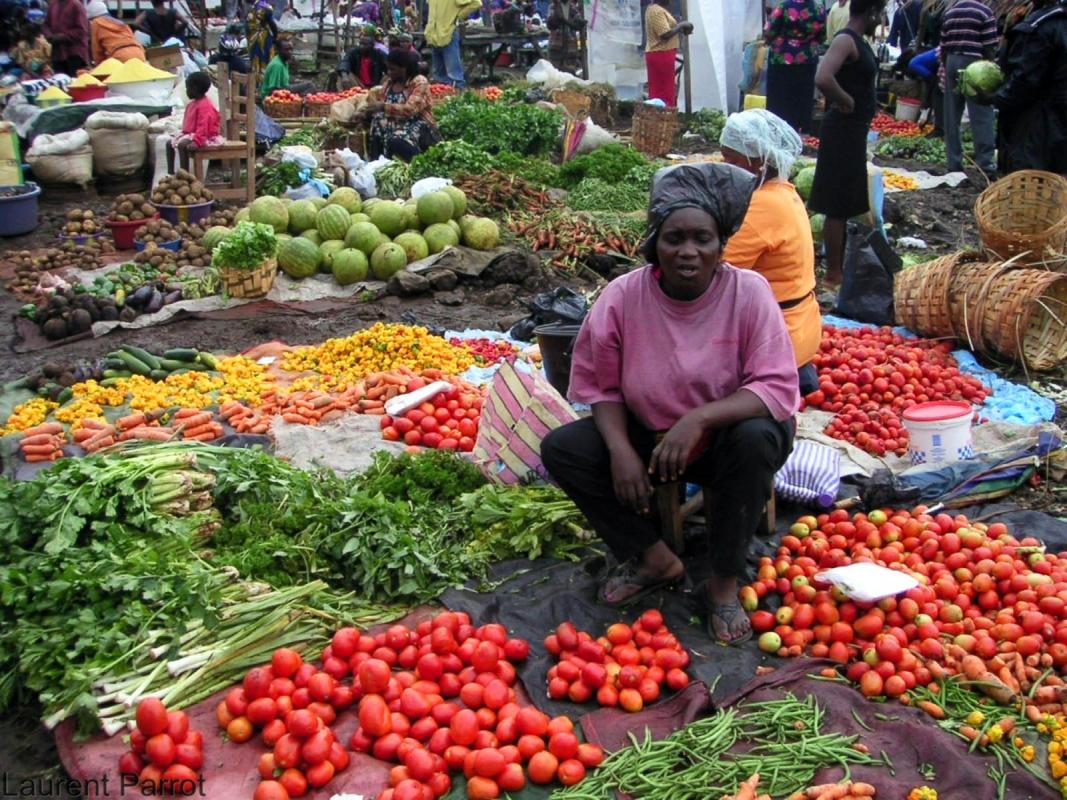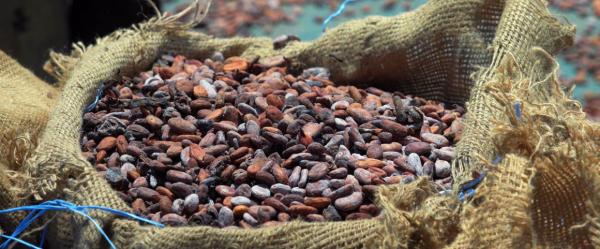Expert view 30 September 2025
- Home
- CIRAD news
- News
- Covid-19 food losses and wastage in Africa
Covid-19 and food security | Increased food losses in Africa

Vegetable stall (tomatoes, celery, green beans, carrots, peppers, etc) at a market in Cameroon © Laurent Parrot, CIRAD
This article is the eighth in a series focusing on the impacts of Covid-19 on food security in tropical countries .
In the current health and economic crisis triggered by Covid-19, regional markets in Africa have actually suffered very little from shortages. Certain traditional value chains have even proved their resilience, notably by switching to local distribution circuits. Nevertheless, the restrictive measures taken have affected supply chains and resulted in increased, and in some cases critical, levels of food losses in certain value chains.
Freight transport restrictions are the main reason behind food losses
Farmers have had difficulty selling their products, and stocks have built up. The FAO representative in Senegal told the media during the crisis that almost a million chickens and nearly 18 000 tonnes of vegetable crops, including 13 000 t of onions, 550 t of cabbages and 566 tonnes of carrots, had piled up due to difficulties transporting them to market.
Guinea, Senegal and Nigeria have seen losses of between 20 and 50% of their potato harvest (4000 t in Senegal).
Pastoral value chains such as dairy and meat have also been severely affected, according to the Association pour la Promotion de l’Élevage au Sahel et en Savane. From the start of the crisis, freight transport was only authorized during the hottest hours of the day, ie when perishable goods were most likely to spoil. In Nigeria, this caused milk to spoil during transport from production centres to processing units. Cameroon imposed a total transport ban, which resulted in huge milk losses and bankrupted processing units. In Chad, meat rotted on stalls for lack of demand, particularly along roadsides.
This situation is far from new. As long ago as 2014, FAO put losses in sub-Saharan Africa at 30 to 40% for plantain bananas, cassava and yams, and 40% for vegetable crops.
Falling incomes are affecting demand
It is the poorest people who have been most affected by a drop in income, particularly those who depend on agriculture. The United Nations Development Programme estimates that in Ivory Coast, the annual income of heads of households has fallen by 47.2%, with a 32% increase in the number of households below the poverty line.
Those who are still able to consume have switched to staple foods rather than local products (cassava, yams and plantains) or fresh foodstuffs that provide other nutrients. The fall in demand has pushed up the risk of unsold goods on markets and for producers.
The crisis has highlighted the lack of infrastructures and logistics
The pandemic struck during the peak production period, triggering further tension between supply and demand. Seasonal surpluses have been compounded by customary failings in terms of both logistics and technology (storage, packing and processing).
Restrictions have also affected the availability of equipment, inputs, packaging materials and labour. This has triggered further losses and a drop in product quality during pre- and postharvest operations.
Export products have been hit by border closures
The situation is no better for export goods. Border closures and logistical constraints have slowed product movements.
Ivory Coast, the world's leading kola nut exporter, has recorded almost 500 tonnes of losses. The same goes for Guinea, where pineapple, potato and cashew nut growers have had to destroy their unsold goods. Losses due to a drop in demand have been exacerbated by logistical difficulties at the ports: congestion in container yards, longer loading times, and backlogs of ships waiting in port.
A range of possible solutions
This experience has highlighted the gaps in our knowledge of food losses and wastage in West Africa. The same goes for our understanding of the effects of a pandemic on food systems.
To prevent a recurrence of such a situation, the priority is to identify the worst affected food products and help stakeholders store, process and preserve their products. Training is also crucial: 30 to 40% of plant products are lost post-harvest due to a lack of knowledge or poor use of storage management techniques and capacity. Research needs to work to understand the mechanisms behind the adoption or rejection of technology.
It is also important to shorten logistical chains and develop decentralized regional markets. Lastly, improved access to suitable processing equipment at a reduced cost would allow farmers to process some perishable goods. These are just some of the solutions suggested by research. At a time when some countries are afraid of shortages and a certain proportion of the world population is still going hungry, losses and wastage are unacceptable.



























